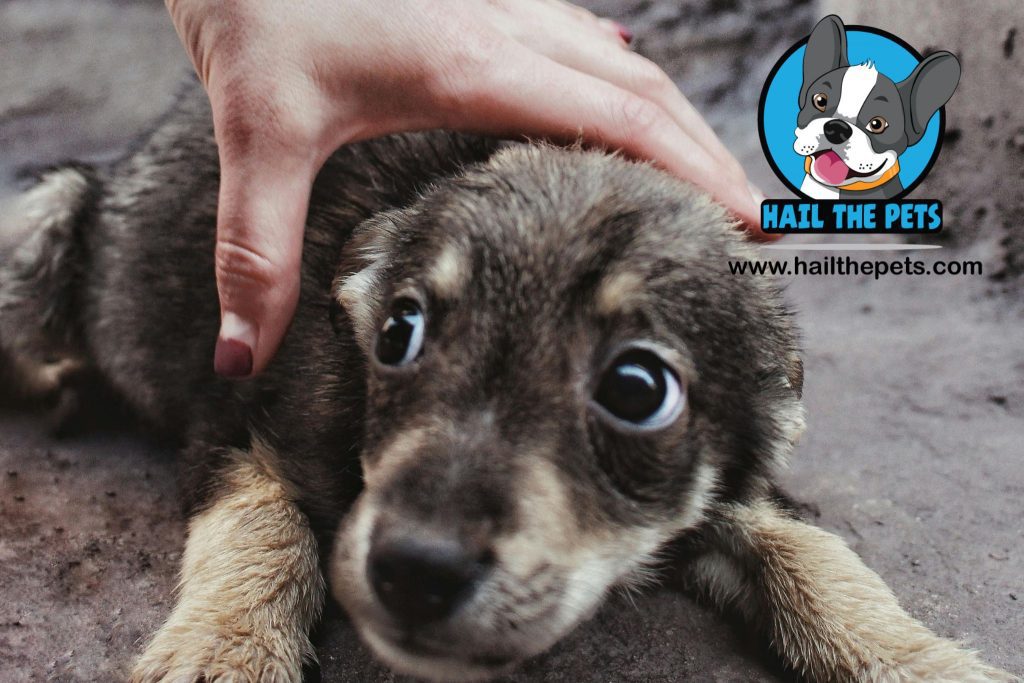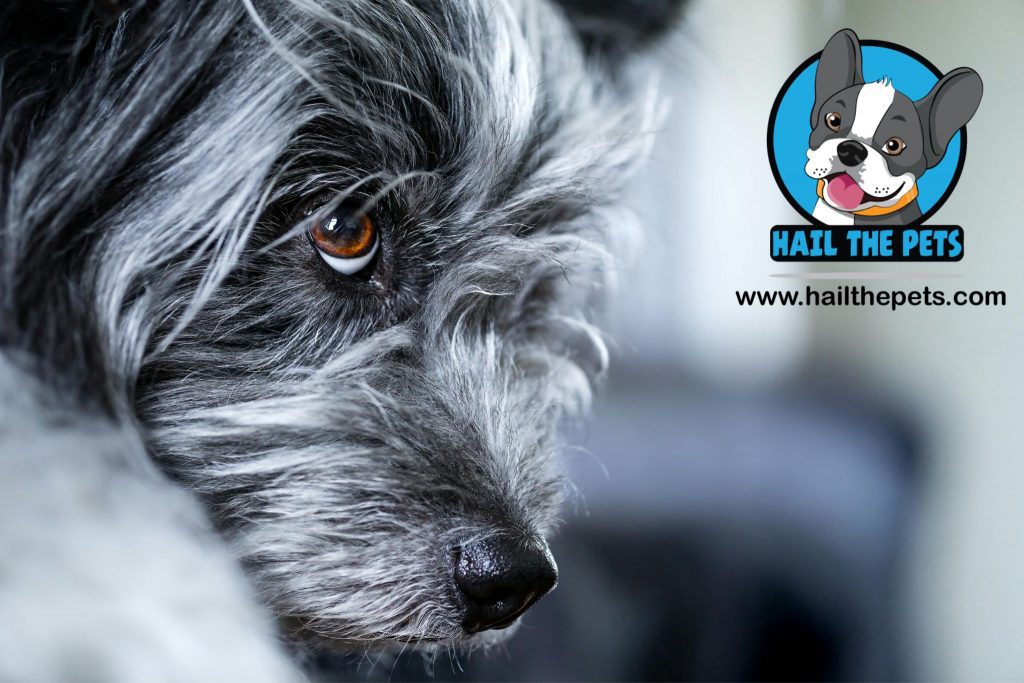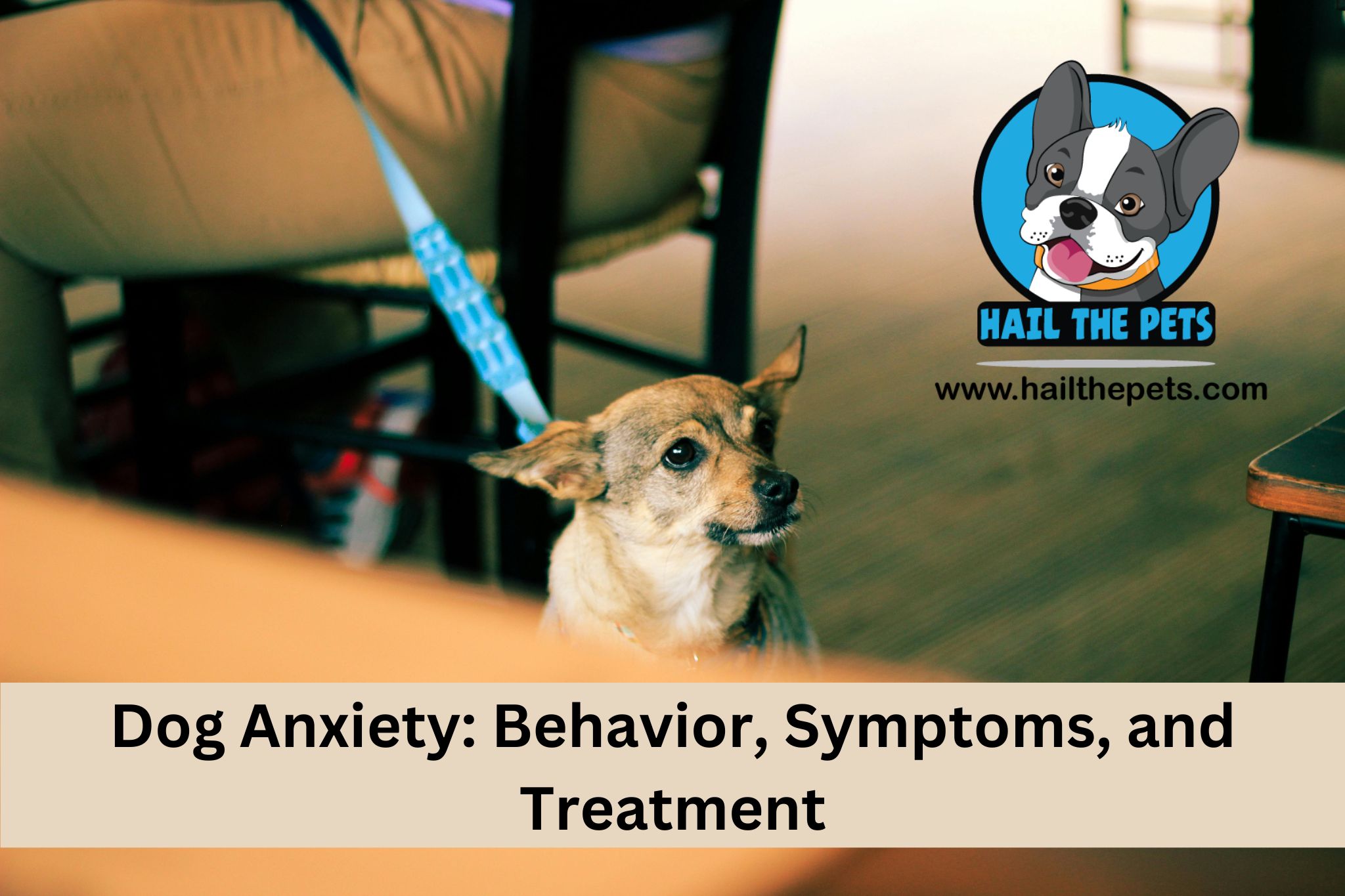Have you noticed your dog exhibiting strange behaviors like barking, trembling or hiding when alone? Or in thunderstorms, they might be looking for cover under the furniture. If so, your dog may be suffering from one of the many forms of pet anxiety. Dog anxiety is a widespread issue affecting a large number of our furry companions. Just like us humans, dogs also experience emotions like fear, stress and worry in certain situations.
Some frequent signs of anxiety in dogs include pacing, whining, destructive chewing and house soiling. Left unaddressed, chronic anxiety can seriously diminish a dog’s quality of life. It may also negatively impact the bond between a dog and their owner over time.
Addressing the root causes, triggers and symptoms holistically offers dogs the best chance at overcoming impairing levels of anxiety or fear issues. In this article, we will take a deeper look at different types of anxiety commonly seen in dogs along with symptoms and their possible treatment.
With the help of lifestyle changes combined with natural remedies, behavior modification training and if needed, medical treatments under an experienced vet’s supervision, it is certainly possible for anxious dogs to lead much happier and stress-free lives. Let’s explore how it is possible!

Types of Dog Anxiety
There are several specific types of anxiety that can affect dogs. Some of the most prevalent forms include:
Separation Anxiety
As mentioned earlier, separation anxiety is one of the most common anxiety disorders seen in canines. It occurs when a dog becomes excessively distressed due to isolation from their owner. Dogs suffering from this condition often exhibit destructive behaviors like chewing, digging or urinating when left alone. They may also bark, howl or pace endlessly. Some dogs with severe separation distress have been known to self-harm due to anxiety. Puppies that were separated from their mothers too early are more likely to develop this issue later in life.
Storm Anxiety
Thunderstorm phobia more commonly known as storm anxiety, is the kind of anxiety or panic experienced when one hears thunder and other loud and explosive sounds like fireworks. Large and explosive fireworks generate in many dogs the primal alarm response because of the shocking appearance and great variability. Dogs with severe anxiety for long Independence Day or New Year celebrations also need support, safety and habituation to fireworks sounds to help foreclose problematic anxiety.
Physical symptoms include trembling, drooling, hiding or attempts to burrow under blankets. Affected pups are clearly distressed, unable to be calmed and may even injure themselves trying to get away from the source of noise. Their behavior during storms shows an instinctive primal response.
Must Read It: Poodle Grooming: Tips for a Beautiful and Healthy Coat
Noise Anxiety
The noise produced by appliances, traffic or crowds can induce fear-based anxiety in some dogs, known as noise anxiety. The most frequent sources of noise are vacuum cleaners, hair dryers, any noise coming from construction sites close to the house, loud music and firecrackers. Generalized noise-phobic dogs attempt to escape from the general vicinity or otherwise avoid the presence of stimuli such as those.
Low pitched sounds are likely to make the dog uncertain, while loud ones put the dog in a state of distress with a set pattern of reactions to the sound. Like storm anxiety this type also has a genetic basis because a dog’s ability to respond to a new or potentially threatening loud signal is adaptive.
Social Anxiety
Dogs experiencing anxiety in social situations can be diagnosed with social anxiety. Phobias include large groups of people, unfamiliar people, noisy children or noisy groups of people. They include moving out of the way, shaking, turning down contact or trying to avoid certain interactions. If left unresolved they may escalate to protect the dog from partaking in day-to-day functions incorporating other people, animals, or environments other than that of their comfort zone.
Therefore, anxiety causes disorderly behavior in dogs as a reaction to various forms of phobic stimuli in its numerous forms. Whenever these fears and phobias are recognized early enough or developed appropriate counterconditioning, their effects are reduced over the years.
Symptoms of Dog Anxiety
The manifestation of anxiety and fear in dogs is commonly associated with the particular cause or kind of fear source. However, there are several common signs and symptoms of dog anxiety that owner must look out for:
Physical symptoms:
- Panting or rapid breathing: When the sympathetic nerves are stimulated to execute the fight of flight activity, respiratory rate increases.
- Trembling/shaking: Resulting from adrenaline release into the bloodstream during stress response.
- Increased heart rate: Anxiety prompts the heart to pump faster due to stimulation of the cardiorespiratory system.
- Drooling: Caused by increased saliva production from apprehension and distress.
- Diarrhea or loose stool: Gastrointestinal upsets occur from anxious states.
- Loss of appetite: Dogs going through fearful episodes tend to lose interest in food.
- Pale mucous membranes: Stress hormones cause vasoconstriction and paleness of gums in anxious pooches.
- Dilation of pupils: A rise in stress chemicals leads to anxious mydriasis of pupil dilation.
Behavioral Symptoms
- Destructive acts: Chewing, digging or rearranging objects acted out in frustration or boredom from anxiety.
- Changes in sleeping patterns: Interrupted sleep or insomnia due to ruminating fearful thoughts.
- Lip licking/yawning: Stress appeasement gestures to ease tension.
- Self-directed behaviors: Excessive licking of paws or fur coats from uneasiness.
- Refusing attention: Apprehensive dogs may shy away or withdraw.
- Posing/freezing: Adopting a statuesque stance as if to avoid engagement or threats.
- Changes in toileting habits: Increased accidents inside home from anxious distress.
Severe or persistent indicators need evaluation by a veterinary behaviorist to diagnose the actual anxiety disorder and institute therapy. A multimodal approach yields the best prospects for anxious dog recovery.
Read It Also: Training Tips for German Shepherds: How to Raise a Well-Behaved Dog

Causes of Dog Anxiety
There can be multiple interwoven factors contributing to the development and escalation of anxiety disorders in dogs. Some of the major causes are:
Genetics and Breed Tendencies
Genetic factors may be in place that put specific breeds up for fear-based behaviors or actions as agreed by researchers. Herding dogs such as the Shetland Sheepdog are shy around strangers because of their original job aspirations. Some breeds like the Greyhound for instance have high chase instincts and fast flight response that elevates anxiety levels.
Lack of Early Socialization
Dogs can learn, accept new sound and touch, and accept other people between 3-12 weeks of age. Number and quality of positive social rich experiences during the early childhood developmental stage is insufficient at this critical age to foster crucial self-confidence. Such pups may develop into shy timid adult animals with predispositions to stress.
Early life Adversity
Stressful incidents during one of the most sensitive phases of life such as maternal separation, abuse/ neglect or disasters result in adverse psychological effects. It is where they establish neural pathways that help one to better remember fear and possibly anxiety disorders at a later age.
Adverse Training Methods
Rewarding is replaced with punishing attempts that only harm the human-canine relationship of trust. The dogs that are scared and receive harsh corrections reduce the incidences of willingness to attempt new experiences further. It aggravates underlying anxiety cumulatively, that is, it gets even worse as days turn to weeks and weeks to months.
Medical Conditions
Some diseases might contribute to the aging ailment such as cognitive dysfunction syndrome in senior dogs or hyperthyroidism. Other conditions that may cause anxiety mimicking symptoms include seizure disorders; central nervous system infections that could be anything such as meningitis and other forms of brain tumors.
Learned Associations
When during fearful episodes such as trembling/hiding one is rewarded through the owner’s attention or escaping from the stimuli, those reactions become reinforced with repetitions. This may enhance the conditioned fears and anxiety patterns.
Environmental Triggers
Unexpected noise such as firecrackers, noise arising out of construction activities near houses or buildings or noise arising out of some natural calamities which may time and again happen was a form of conditioning experiences for dogs causing anxiety. The more people are exposed the stronger their revulsion and distress becomes.
Addressing such predisposing and exacerbating influences holistically forms a critical part of healing anxiety disorders through vet-guided treatment programs in pets.
Management and Treatment of Dog Anxiety
As a result of this understanding, the management of anxiety disorders in dogs calls for a special multiple-component treatment technique that incorporates changes in the lifestyle of the dog, behavior therapy as well as medications where necessary. Patience and repetition are necessary to improve.
Lifestyle Adjustments
- Maintaining low energy at home with help of no TV/static music/classical music/diffusers.
- Establish predictable routines, regular potty breaks and feeding schedule for stability.
- Manage triggers; close doors/curtains during storms; desensitize your pup to noises gradually.
- Use toys in puzzle form to stimulate the dog physically and mentally, as a means of avoiding boredom.
- Look for another separate wing for dog where there will be no noise that disturbs it,
Counterconditioning
This involves pairing stress indicators with things that are enjoyable and advice on how to do these using techniques in classical conditioning by a vet. For example:
- Having a specific period of playing happy music or even giving something that the dog likes in perfect steps and loud noise can help promote positivity instead of fear.
- Applying desensitization and counterconditioning toys such as the Thunder shirt that lightly wrap and squeeze the dog make puppies and other anxious canines become calm and less stimulated.
Desensitization Training
Expose the dog to triggers in a controlled, gradual manner starting at subthreshold levels where they do not elicit anxious reactions. Gradually increase the intensity or proximity over multiple practice sessions with rewards.
Relaxation Protocols
Train commands like “settle”, engage in routine massage, calming pheromone diffusers or calming caps to induce psychological relaxation responses. Activities like hydrotherapy further aid stress relief.
Nutraceutical Supplements
Under vet supervision, natural calmatives like tryptophan, chamomile, lavender, CBD or alpha-casozepine may provide additive anxiety management when given consistently. However, effects can vary across individuals.
Anti-anxiety Medications
Some herbs like chamomile, valerian and L-theanine may provide mild anxiety relief in dog anxiety attacks. But always consult a vet. SSRIs, antihistamines, benzodiazepines and pheromone therapy may be prescribed short-term under vet supervision.
Staying With Your Vet
Regular checkups allow monitoring progress and adjusting treatments as needed. With patience and consistency, anxious dogs can make excellent improvements.
Behavior Modification Drugs
In severe cases where environmental modifications prove inadequate, SSRIs, anti-anxiety medication, or anti-epileptic drugs may be prescribed as an adjunct to behavioral therapy temporarily. Close monitoring is advised with any pharmaceutical intervention.
With compassionate multi-modal care involving health experts, alternative practitioners and patience from pet parents, even chronically anxious dogs can go on to lead much happier lives free from debilitating fear-based problems. Early non-drug intervention yields the best long-term prognosis.

FAQS
How to treat anxiety in dogs?
The management of dog anxiety entails a combination of accustoming and training techniques that involves counterconditioning. Diet modification, a drug or a dietary supplement prescribed by the veterinarian, and complementary treatments can also minimize signs. The implication is that consistency is crucial to management practices.
How to calm an anxious dog?
Some methods to calm an anxious dog include using pheromone diffusers or calming treats, exercising them before potential triggers, keeping environments low-key with classical music, and training commands like ‘settle’ for relaxation. Massages, CBD supplements in some cases, and desensitization also aid in anxiety relief.
How to fix a dog’s separation anxiety?
To fix separation anxiety requires identifying triggers and working from a distance first before leaving a dog alone. Use positive association and desensitization by rewarding calm dog body language. Ensure physical and mental stimulation when home. Lifestyle changes and counterconditioning aid in building dog confidence when humans aren’t present. Medication in some cases may help with severe anxiety.
What dog breed has the worst anxiety?
Some dog breeds that tend to be predisposed to anxiety due to genetic and trait factors include German Shepherds, Border Collies, Bull Terriers and some herding breeds like Shetland Sheepdogs. However, many breeds can develop anxiety issues depending on early socialization, training and temperament. No single breed is guaranteed to have severe anxiety, and proper care helps manage it.
Conclusion
Anxiety is a complex issue affecting many companion dogs which requires a considerate approach. While some stress and fear are normal canine behavior, excessive and persistent signs of dog anxiety need addressing to protect the dog’s welfare and bond with their owners. We discussed how early exposure and training help reduce anxiety risks, while lack of socialization or trauma can end up worsening anxiety and behaviors over time if left unmanaged.
So, for the people who care for their pets and want to help the four-legged members of the family affected by disabling fear-related disorders, there is a wide-open road ahead. To see how much can be accomplished one has only to look at the interaction between pet parents, veterinarians trainers and, most important of all, the dogs themselves who, whatever their anxiety disorders, are capable of monumental progress.
It is a fact that anxiety can never be eradicated but its deleterious effects can for sure be reduced in the long run through personalized and empathetic treatment. People all around the world may achieve numerous awareness and through the responsible management of such dogs may lead a happy life.
